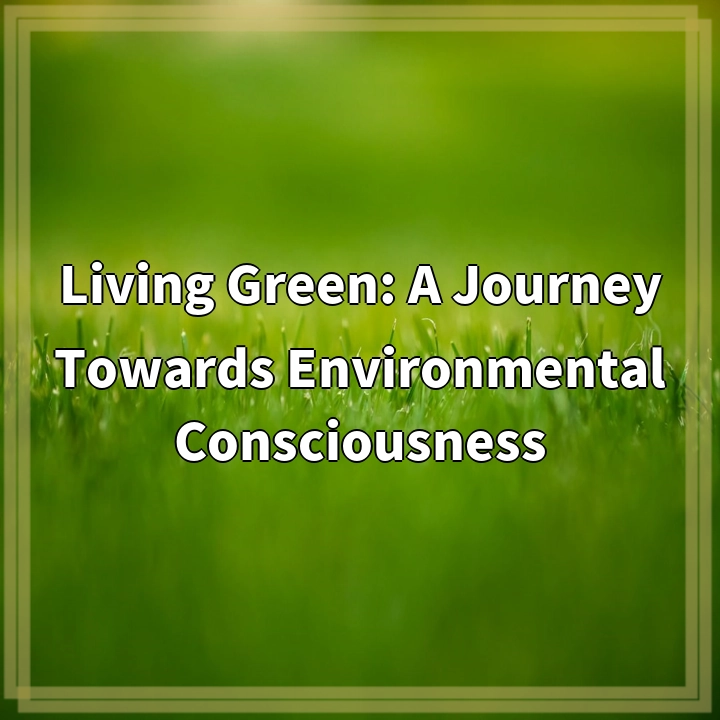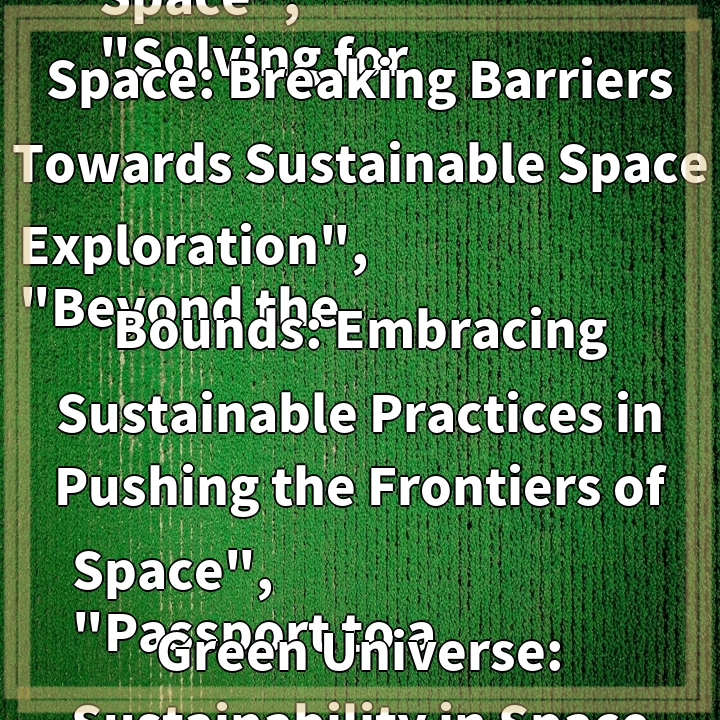
What it is:
Living Green: A Journey Towards Environmental Consciousness is a lifestyle approach that prioritizes sustainable practices and mindful consumption choices. It encompasses various actions and behaviors aimed at reducing our ecological footprint and promoting the well-being of the planet. Living green involves adopting environmentally friendly habits, such as conserving energy and water, recycling, supporting local and organic food sources, reducing waste, and using eco-friendly products.
Real-World Problems:
While living green is gaining popularity and recognition, there are several pressing real-world problems that call for immediate attention and action. These problems include:
1. Climate Change:
Climate change is a global crisis caused by human activities, primarily the burning of fossil fuels and deforestation. Rising temperatures, extreme weather events, and melting ice caps pose severe threats to ecosystems, communities, and biodiversity. Living green involves understanding the causes and impacts of climate change and taking steps to reduce carbon emissions and promote renewable energy sources.
2. Pollution:
Pollution in the form of air, water, and soil contamination is a significant environmental problem. Toxic chemicals, industrial waste, and plastic pollution harm wildlife, ecosystems, and human health. Living green emphasizes reducing pollution by adopting sustainable waste management practices, supporting clean technologies, and advocating for stricter regulations.
3. Deforestation:
Deforestation is the clearing of forests for various purposes, including agriculture, logging, and urban development. It leads to habitat loss, biodiversity decline, and contributes to climate change. Living green involves supporting sustainable forestry practices, avoiding products linked to deforestation (such as palm oil), and promoting reforestation efforts.
4. Resource Depletion:
Human activities have put immense pressure on Earth’s finite resources, such as freshwater, minerals, and forests. Overconsumption and inefficient resource use have resulted in scarcity and ecological imbalance. Living green encourages responsible resource management, mindful consumption, and the adoption of circular economy principles to reduce waste and maximize resource efficiency.
5. Loss of Biodiversity:
The rapid loss of biodiversity is a critical issue resulting from habitat destruction, pollution, climate change, and invasive species. Protecting biodiversity is essential for the health of ecosystems and human well-being. Living green involves supporting conservation projects, practicing sustainable agriculture, and promoting habitat restoration.
By understanding what living green entails and the real-world problems associated with our current lifestyles, we can take proactive steps to make positive changes and contribute to a more sustainable future.

Solutions to Real-World Problems:
Addressing the real-world problems discussed earlier requires collective action and individual changes. Here are some solutions to empower individuals and communities in living green and creating a positive environmental impact:
1. Climate Change:
To mitigate climate change, individuals can reduce their carbon footprint by conserving energy, embracing renewable energy sources, and adopting energy-efficient practices. Supporting policies and initiatives that promote renewable energy and advocating for sustainable transportation options are also crucial steps.
2. Pollution:
By embracing a zero-waste lifestyle, individuals can significantly reduce pollution. This can be achieved through proper waste management, recycling, and avoiding single-use plastic products. Supporting legislation for stricter regulations on industrial pollution and promoting sustainable alternatives can help tackle pollution at a larger scale.
3. Deforestation:
To combat deforestation, individuals can make informed choices about the products they consume, opting for sustainably sourced and certified options. Supporting organizations and projects that work towards reforestation and forest conservation is also essential. Promoting awareness about the impacts of deforestation and advocating for stronger forest protection laws can create positive change.
4. Resource Depletion:
Reducing resource consumption, reusing materials, and recycling are effective ways to combat resource depletion. Supporting and advocating for a circular economy, which focuses on minimizing waste and maximizing resource efficiency, can also contribute to resource conservation. Additionally, responsible consumption choices, such as buying second-hand or locally produced goods, can help reduce the strain on Earth’s resources.
5. Loss of Biodiversity:
Protecting and preserving biodiversity requires individual actions like supporting conservation organizations and engaging in citizen science initiatives. Promoting sustainable agricultural practices, supporting sustainable fishing methods, and creating and protecting natural habitats are also crucial steps. Educating others about the importance of biodiversity and advocating for policies that prioritize conservation can have a significant impact.
By implementing these solutions, individuals can contribute to addressing the real-world problems discussed earlier and create a more sustainable and environmentally conscious future for generations to come.















